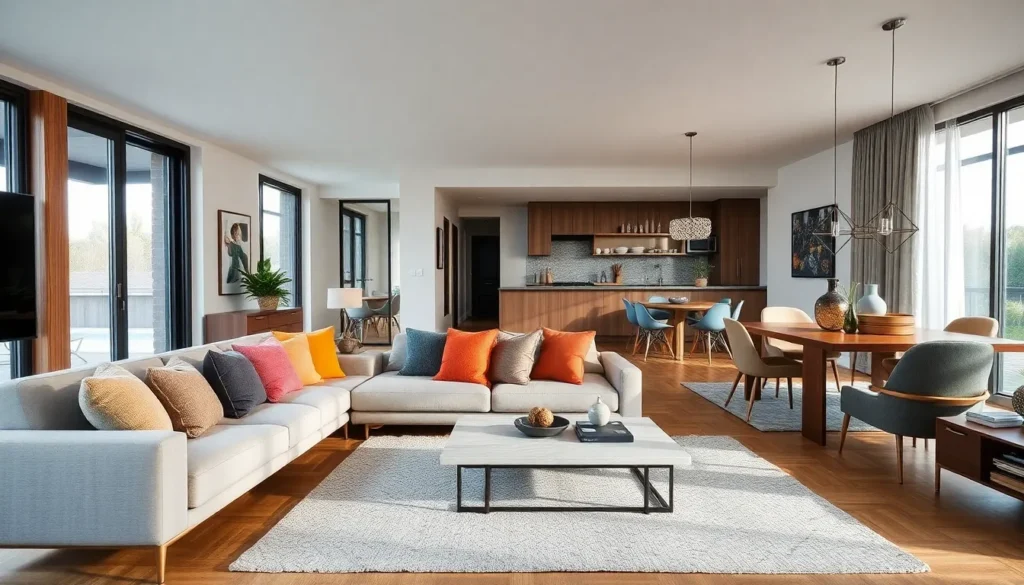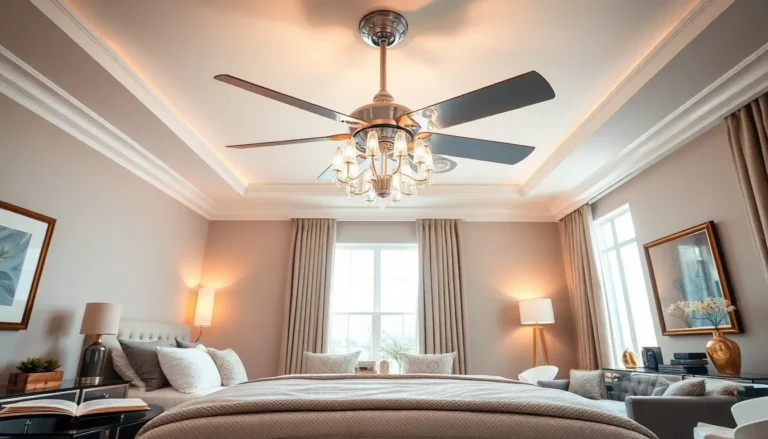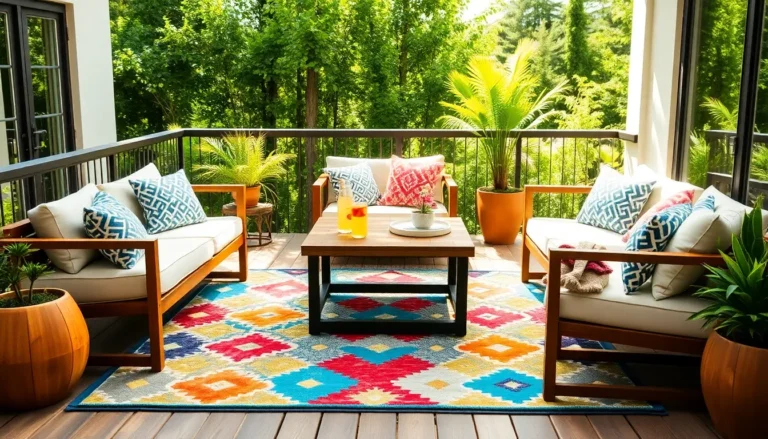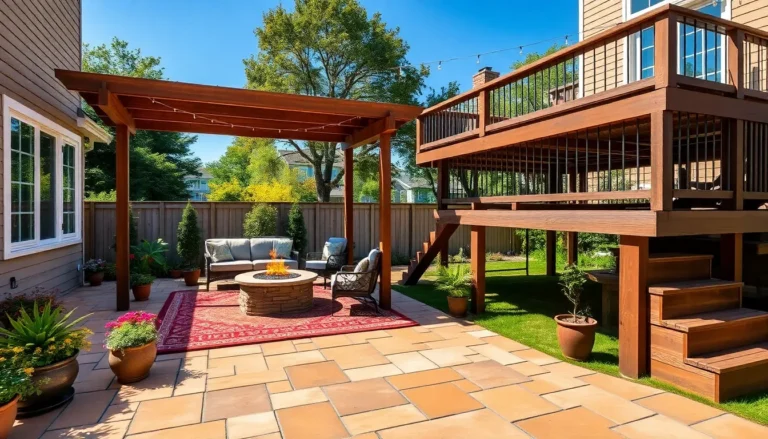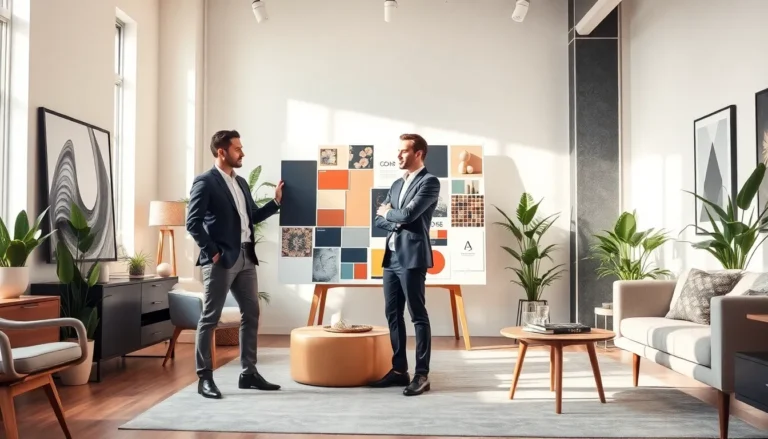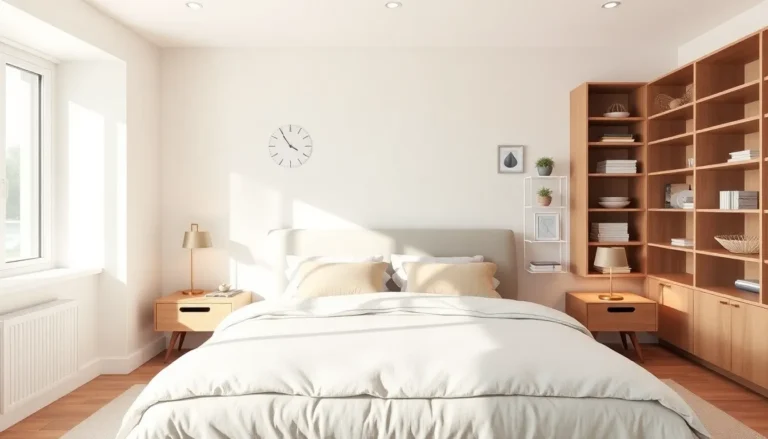Table of Contents
ToggleIf you think decorating is just about throwing a few cushions on a couch, think again. Decor design construction is a blend of art, science, and a dash of whimsy that can turn any dull room into a vibrant showcase. Whether you’re planning to revamp your office, upgrade your living space, or simply bring a pop of color to your walls, understanding the ins and outs of decor design can be a game changer. So grab your favorite drink, sit back, and let’s jump into the fantastic world of decor design construction.
Understanding Decor Design
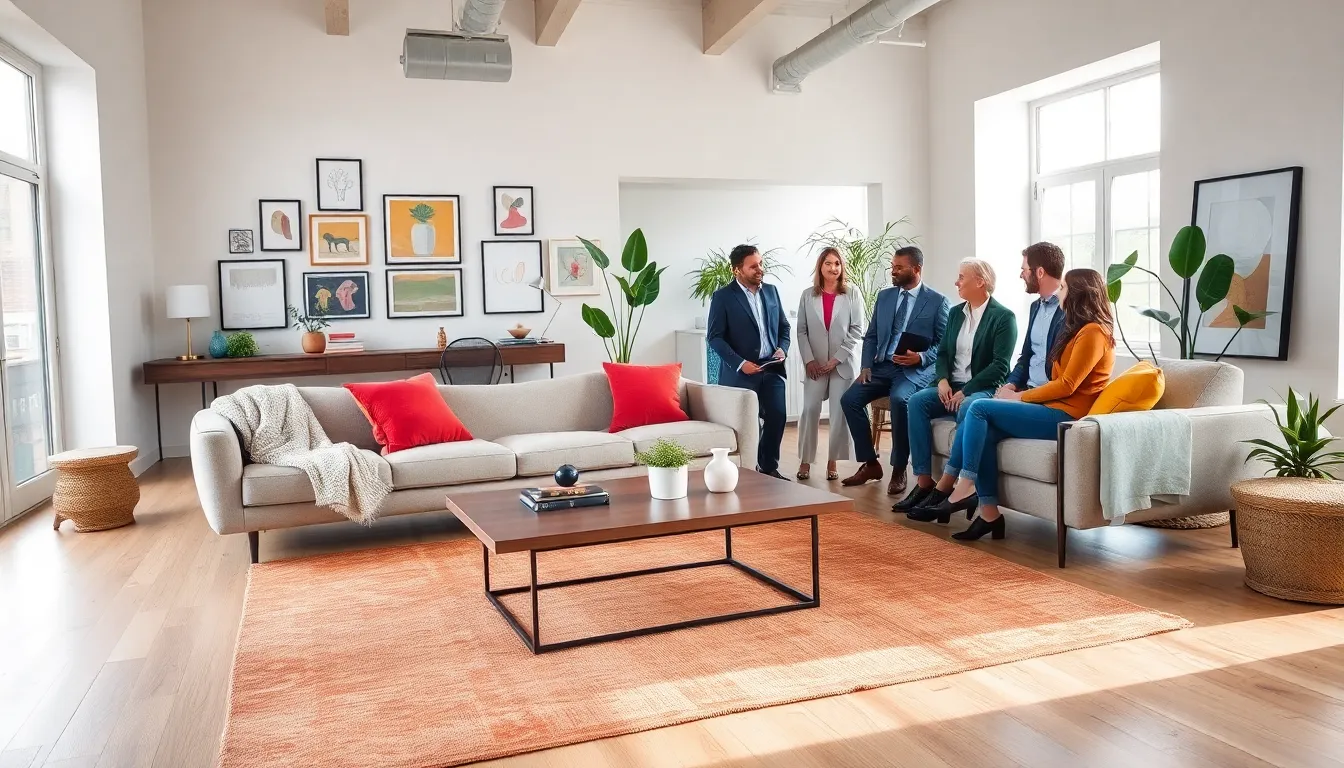
Historical Influences on Decor Design
Decor design has deep roots, influenced by various cultures throughout history. From the ornate details of Baroque to the clean lines of Mid-Century Modern, each trend reflects societal values and technological advancements. You can trace the evolution of decor design back centuries, discovering how it resonates with the atmosphere of its time. Consider how the Victorian era’s obsession with ornamentation contrasts sharply with today’s minimalist pursuits.
Current Trends in Decor Design
Fast forward to today, and decor design is evolving at a breathtaking pace. The blending of styles is all the rage: think Scandinavian meets industrial chic. Earthy tones and minimalistic approaches are popular, combined with unexpected pops of color that shout personality. Open floor plans are also trending, promoting a sense of community and flow that’s perfect for both families and entertaining.
The Role of Color in Decor Design
Color isn’t just an aesthetic choice, it can influence moods, perceptions, and eventually, how a space feels. Warm colors like reds and yellows can energize a room, while blues and greens tend to invite tranquility. The psychological impact of color is essential in decor design. For instance, painting a home office in calming shades might boost productivity, while vibrant hues in a playroom inspire creativity.
Key Elements of Decor Design
Furniture Selection and Arrangement
Selecting the right furniture is akin to choosing the right ingredients for a recipe. You can mix and match, but the harmony must be present. Also, the arrangement significantly affects the flow of a room. Will the chairs face each other or the TV? Are there pathways for movement? A well-furnished and strategically arranged space welcomes comfort and functionality.
Lighting and Ambiance Creation
So often overlooked, lighting is the secret sauce of decor design. It’s not just about making things bright: it’s about creating mood and atmosphere. Natural light enhances a space during the day, while table lamps and sconces can contribute to a cozy evening vibe. Understanding how to layer lighting, ambient, task, and accent, is key to achieving the desired effect.
Textiles and Materials Choices
The choice of textiles and materials adds depth and complexity. A room filled with leather, wood, and linen exudes sophistication. Conversely, adding textiles like throw pillows or curtains can introduce warmth. Don’t forget to consider texture. A mix of hard and soft materials not only creates visual interest but also enhances comfort. Choosing sustainable materials is also gaining popularity, aligning with the growing consciousness around sustainability.
Incorporating Art and Accessories
Functional vs. Aesthetic Considerations
Art and accessories can be both functional and ornamental. Think about furniture that serves multiple purposes, like a stylish ottoman that doubles as storage. Art, too, can evoke emotion. A large canvas can be a stunning focal point, while smaller, curated pieces can add layers of intrigue. This balance between the practical and the pretty makes for a well-rounded design.
The Importance of Space Planning
Space planning is like drawing a roadmap for your decor. It’s about understanding how each piece interacts with its surroundings. Does that trendy bookshelf block traffic flow? Effective space planning maximizes functionality and ensures that each area serves its intended purpose. A clean, uncluttered space feels expansive and inviting.
Budgeting for Decor Design Projects
Cost-Effective Sourcing Options
Decor design doesn’t have to expensive. Thrift shops, flea markets, and online marketplaces can be goldmines for unique finds. With a bit of creativity and patience, you can uncover treasures that scream personality. Instead of splurging on high-end items, consider mixing pricier investment pieces with budget-friendly accessories to maintain flair without sacrificing style.
DIY vs. Professional Help
Deciding to go the DIY route or hiring a professional can be a dilemma. While DIYing gives you the freedom to express your creativity, a professional can navigate complexities like permits and structural issues. Consider your skill set, timeline, and budget. Many homeowners find that a hybrid approach, doing what they can while hiring professionals for more complex tasks, yields satisfying results.
Future of Decor Design Construction
Sustainable Practices in Decor Design
The future of decor design is increasingly leaning towards sustainability. Designers are focusing on eco-friendly materials and practices, minimizing waste, and promoting longevity in design. Using sustainably sourced timber, recycled materials, and energy-efficient fixtures not only benefits the planet but can enhance your space’s appeal and value.
Innovative Technologies in Design
Technological advancements are shaping the way we think about decor. Virtual reality tools allow designers to visualize spaces before they become a reality, making practical adjustments easier. Smart home devices enhance functionality, pairing seamlessly with modern design trends to create not just beautiful, but also efficient living spaces. The integration of technology in decor design promises a future filled with exciting possibilities.

